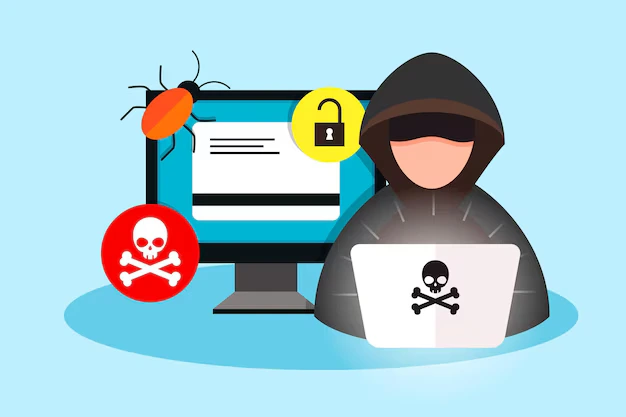Key Takeaways:
- China remains a hub for counterfeit goods, undermining intellectual property rights and impacting global industries’ profitability.
- China has increased efforts to combat piracy, implementing stricter laws and enhancing enforcement against counterfeit goods.
- Online platforms in China face difficulties in controlling piracy, with counterfeit products often slipping through loopholes in regulation.
Piracy in China remains a significant issue, affecting industries worldwide and costing businesses billions of dollars annually.
As one of the largest global markets, China has long been a hotspot for counterfeit products, from electronics to fashion and pharmaceuticals.
In fact, a 2020 report by the Organisation for Economic Co-operation and Development (OECD) estimated that counterfeit goods accounted for nearly 3.3% of global trade, with China being the largest source of these products. This rampant piracy not only harms brands but also presents safety and health risks to consumers.
Despite ongoing efforts by the Chinese government to tackle piracy, including stricter regulations and enforcement actions, the problem persists, especially in online spaces.
E-commerce platforms like Alibaba and Taobao have become major platforms for counterfeit goods, making it challenging to monitor and curb illegal activity. While China has improved its intellectual property laws, the sheer scale of counterfeiting makes enforcement a constant struggle.
For businesses, combating piracy in China is an ongoing battle that requires robust intellectual property protection, vigilance, and collaboration with local authorities to safeguard their brands.
The impact of piracy on the global market is immense, and addressing it will be essential to maintaining innovation and economic growth!
Protect Your Brand & Recover Revenue With Bytescare's Brand Protection software
What Is the Scale of Piracy in China?
Knowing the scale of piracy in China brings to light a huge problem that affects many businesses around the world: counterfeit goods, software piracy, and intellectual property violations.
The OECD’s 2020 report shows that China accounted for more than 60% of the world’s trade in counterfeit goods. This covers a lot of different sectors. It is estimated that counterfeit goods alone cost the world economy about $509 billion every year.
Key industries affected by piracy include:
Entertainment
The film and music industries face widespread piracy, with illegal copies of movies and music being sold through both physical and digital channels. This has cost billions of dollars in missed sales for foreign content.
Technology
Another big target is the tech industry, where counterfeit electronics like smartphones and other gadgets are flooding markets around the world. Tech businesses are impacted by this, and customers are put at risk of safety.
Pharmaceuticals
There are a lot of health problems around the world that are caused by counterfeit drugs in China. The market for counterfeit pharmaceuticals not only harms the brand reputation but also puts people’s lives at risk with low-quality medicines.
Fashion
Counterfeit apparel have a big effect on the fashion industry. There are a lot of fake goods on the market, and they hurt high-end luxury brands the most because they harm brand value.
China’s massive manufacturing sector plays a critical role in counterfeit production. China is a major source of cheap counterfeit goods that are distributed all over the world due to its huge network of factories.
Despite increasing enforcement efforts, the sheer scale of production and distribution continues to fuel this global problem.
Historical Perspective of Chinese Piracy

The Chinese history of piracy is closely linked to how the country has changed its approach to intellectual property (IP) laws as well as to broader economic and cultural factors.
China had a different view of intellectual property. In traditional Chinese culture, the concept that one person owns an idea or invention is not very important.
During the imperial era, copying and imitation were often seen as a way to learn and preserve knowledge. This cultural perspective persisted long into the 20th century, even as China began to modernise.
In the late 20th century, China’s integration into the global economy led to the need for more formal IP protections. In 1980, China joined the World Intellectual Property Organisation (WIPO), and in 1990, it enacted its first copyright law.
Over time, China has strengthened its IP laws, with the most significant update being the 2019 amendments to the Trademark Law. Despite these improvements, enforcement has remained inconsistent, particularly in certain sectors, and piracy continues to thrive due to loopholes and regional variations in law enforcement.
Economic factors also play a significant role. China’s low production costs, especially in labor and materials, make it an attractive base for counterfeit manufacturing.
The need for cheap goods in emerging markets has made the black market for counterfeit goods very successful.
That need is clear in various industries, where customers often value price over authenticity. Piracy have been a problem in China for a long time because of its history, culture, and economy.
Protect Your Brand & Recover Revenue With Bytescare's Brand Protection software
What Are the Types of Piracy in China?
| Type of Piracy | Description | Key Industries Affected |
| Counterfeit Goods | The production and sale of fake consumer products such as electronics, clothing, and accessories. | Fashion, Technology, Automotive |
| Software Piracy | The illegal copying, distribution, and sale of software programs without proper licensing. | Technology, Entertainment, Gaming |
| Digital Piracy | The illegal distribution and sale of movies, TV shows, and music through physical copies or online. | Entertainment, Media |
| Pharmaceutical Piracy | The production and distribution of counterfeit medications that may not meet safety standards. | Pharmaceuticals, Healthcare |
| Luxury Goods Counterfeiting | The replication of high-end products like designer clothing, watches, and accessories. | Fashion, Luxury Brands |
| Patent Infringement | The unauthorised use or copyright piracy of patented products or technologies. | Technology, Pharmaceuticals |
| Trademark Infringement | The use of logos, names, or symbols identical or similar to those of established brands. | All industries |
What Are the Factors That Contribute to Piracy in China?
Piracy is still a problem in China for many reasons, including historical and cultural factors as well as economic and regulatory challenges.
Economic Factors
- The low cost of making products in China is one of the significant drivers of piracy in China.
- It is a good place for counterfeit product manufacturers to set up a business because the labour and materials are cheap, and the goods they produce are only a part of the price of legitimate goods.
- The market for pirated goods also continues to grow because of the need for cheap goods in both local and foreign markets in the fashion, technology, and pharmaceutical industries.
Weak Enforcement of Intellectual Property Laws
- China’s intellectual property (IP) laws have evolved a lot better, but they are still not always enforced.
- Local authorities may lack the resources or willingness to crack down on counterfeit activities, especially in smaller regions.
- The sheer number of counterfeit goods as well as the complexity of supply lines make it even harder to implement laws.
Cultural Factors
- China has had a different view of intellectual property in the past.
- The concept of individual ownership of ideas was not deeply ingrained in traditional Chinese culture, where imitation was often seen as a means of learning.
- Even though China has come a long way in embracing IP rules similar to those in the West, the level of piracy continues to be driven by cultural attitudes toward IP.
Online Piracy and E-commerce
- As online platforms like Taobao have grown, they have opened up new ways for piracy.
- E-commerce sites have a hard time controlling the sale of counterfeit goods online, which makes it easier for pirates to reach customers all over the world.
Protect Your Brand & Recover Revenue With Bytescare's Brand Protection software
What Are the Economic and Global Implications of Piracy in China?

Piracy in China has significant economic consequences that ripple across various industries and global markets. One of the most immediate impacts is the loss of revenue for legitimate businesses.
In 2020, the global cost of counterfeit goods was estimated at $509 billion annually, with China being a major source. Industries such as technology, fashion, pharmaceuticals, and entertainment suffer substantial financial losses.
For example, the technology sector is especially impacted by counterfeit electronics, which not only result in lost sales but also expose consumers to potentially unsafe products.
Intellectual Property Theft
China’s high rate of intellectual property (IP) theft poses a critical challenge for businesses worldwide. Companies invest billions of dollars in research and development (R&D), but counterfeiters quickly replicate and distribute these innovations, diminishing the value of original products.
This theft reduces the incentive for companies to innovate and harms global industries. The software industry is particularly affected by software piracy, leading to significant revenue losses and undermining the legitimacy of intellectual property rights.
Impact on the Global Supply Chain
Piracy also disrupts the global supply chain, as counterfeit goods infiltrate markets, often replacing legitimate products. This influx of fakes dilutes the value of brands, particularly in sectors like luxury goods.
For example, the sale of counterfeit luxury fashion products damages the reputation of high-end brands and erodes customer trust. Consumers unknowingly purchasing counterfeit goods may face quality issues and safety risks, further exacerbating brand integrity damage.
Job Losses and Business Downsizing
The economic strain caused by piracy often results in job losses and business downsizing. Companies that experience heavy counterfeiting may be forced to reduce their workforce or relocate to regions with more robust protection of intellectual property.
This not only affects employees but also hampers overall economic growth. In severe cases, it can result in the collapse of businesses, further harming both local and global economies.
Measures to Combat Piracy in China
International Pressure and Agreements
- International pressure has played a significant role in pushing China to address piracy and intellectual property (IP) theft.
- The Chinese government has faced scrutiny from global organisations like the World Trade Organisation (WTO) and major trading partners, particularly the United States and the European Union, who demand stronger IP protections.
- In response to this pressure, China has signed numerous international agreements, including the TRIPS Agreement (Trade-Related Aspects of Intellectual Property Rights), which sets global standards for IP protection.
- These agreements have pushed China to adopt better IP laws and practices, although enforcement remains inconsistent.
- Continued dialogue and trade negotiations with other nations, particularly those with strong IP laws, continue to emphasise the need for reform in the fight against piracy.
Strengthening IP Laws and Enforcement in China
- China has made significant strides in strengthening its IP laws over the years.
- The country’s Patent Law and Trademark Law have been updated multiple times, with the most notable change being the 2019 amendments that introduced stricter penalties for IP violations and improved the protection of trade secrets.
- Despite these advancements, enforcement of IP laws is still a major challenge.
- Regional inconsistencies and a lack of resources at local levels hinder the effectiveness of these laws.
- To address this, China has created specialised IP courts and IP-focused police units, and its judicial system has become more focused on IP cases.
- However, counterfeit goods continue to flow through online platforms and physical markets, indicating a need for more robust enforcement and better collaboration between local and national authorities.
Role of Technology in Combating Piracy
- Technology has become an essential tool in the fight against piracy in China.
- Artificial intelligence (AI), machine learning, and blockchain technology are being used to track counterfeit goods and identify IP violations in real-time.
- E-commerce platforms are utilising AI-powered systems to monitor product listings and detect fake goods, while blockchain is being used to verify the authenticity of high-end products.
- Companies are also using digital watermarking and anti-counterfeiting software to protect digital content like movies, music, and software.
- Moreover, image recognition technologies can quickly identify counterfeit versions of branded goods, allowing for quicker action to remove them from the market.
- While these technological solutions are effective, they must be paired with stronger regulations and better enforcement to truly curb piracy in China.
What Are the Challenges in Addressing Piracy in China?
| Challenge | Impact |
| Local Chinese authorities may lack resources or motivation to enforce IP laws consistently across regions. | Chinese pirates continue to flood markets, and enforcement is often ineffective. |
| Lack of public and business awareness about IP laws and their importance in China. | Companies struggle to protect their innovations and brands effectively. |
| Online platforms like Taobao and Alibaba have difficulty regulating counterfeit goods due to high volumes of transactions. | Counterfeit goods easily reach global consumers, making monitoring challenging. |
| China’s cheap labor and manufacturing costs make it an attractive location for counterfeit production. | Pirated goods are often cheaper to produce, making them more appealing to consumers. |
| Historical views on intellectual property in China may contribute to the underappreciation of IP rights. | Piracy is sometimes seen as a cultural norm or a way to learn from original products. |
| Counterfeit goods are often hidden within complex global supply chains, making them hard to track. | Counterfeit products can be easily distributed without detection. |
| International cooperation on IP enforcement can be slow or inconsistent, particularly with jurisdictions outside China. | Pirated goods can easily be sold globally without facing legal action in foreign markets. |
| Gaps in existing laws and regulations, especially in rapidly evolving sectors like digital media, leave room for piracy. | Counterfeiters exploit these gaps, particularly in new technologies and industries. |
| Many consumers in China are unaware of the dangers posed by counterfeit goods, leading to continued demand. | Consumers continue purchasing fake products, supporting the counterfeit market. |
Examples of Piracy in China

Impact of Counterfeit Luxury Goods on the Global Fashion Industry
Counterfeit luxury goods have long been a significant problem in the global fashion industry, with China being a major source of fake designer products.
High-end brands like Louis Vuitton, Gucci, and Rolex have experienced substantial losses due to the production and sale of counterfeit goods. These fakes are often sold at a fraction of the price of authentic products, undercutting sales and diminishing the exclusivity of luxury brands.
The World Customs Organisation estimates that counterfeit luxury goods cost the global economy billions each year. Beyond financial losses, the sale of counterfeit products also damages brand reputation and consumer trust.
Fake goods are often made from inferior materials, which tarnish the image of luxury brands, leading to a decline in consumer confidence and perceived brand value.
Digital Piracy of Hollywood Movies in China
China has been a hotspot for digital piracy of Hollywood movies, with unauthorised copies of films appearing on various platforms shortly after their theatrical release.
A significant case occurred with the Pirates of the Caribbean: On Stranger Tides, where pirated copies surfaced within hours of the film’s global release. This has led to substantial financial losses for Hollywood studios.
The Motion Picture Association has estimated that piracy costs the global film industry over $1 billion annually in lost revenue. Despite China’s efforts to crack down on illegal streaming, pirated versions of films continue to circulate through websites and apps, significantly impacting box office earnings.
Patent Disputes Involving Major Tech Companies
Patent disputes are a common issue between major tech companies, with China being at the center of several high-profile cases. One notable case is between Apple and Qualcomm, where Qualcomm accused Apple of using its patented technology without proper licensing.
The dispute escalated to legal battles in multiple countries, including China, which has seen its own share of IP disputes involving tech giants. These cases highlight how patent infringement in China can have a global impact, disrupting innovation, leading to costly legal fees, and sometimes resulting in product bans or fines.
These disputes reflect the complexities of protecting intellectual property in a rapidly evolving technological landscape.
The Future of IP Protection in China
The future of intellectual property (IP) protection in China is poised for significant evolution, as the country continues to integrate more robust IP practices while balancing its role in the global economy. Several key factors are shaping the future of IP protection in China:
Strengthening IP Laws and Enforcement
- China has made considerable strides in improving its IP laws, with recent amendments to the Patent Law and Trademark Law in 2019, which increased penalties for infringements and streamlined the process for handling disputes.
- Going forward, enforcement will likely become more consistent and transparent as China modernises its judicial system and IP enforcement mechanisms.
- The creation of specialised IP courts and increased penalties for violations signal a serious commitment to curbing piracy.
Technological Innovation in IP Protection
- As the digital economy continues to grow, technology will play a central role in IP protection.
- AI-powered monitoring systems, blockchain technology for product verification, and digital watermarking are increasingly being used to combat digital piracy and counterfeit goods.
- These innovations will help track and verify authenticity across industries, from fashion to technology, enhancing protection for IP holders.
Increased International Collaboration
- China is likely to strengthen its collaboration with global organisations such as the World Intellectual Property Organisation (WIPO) and other trade partners to align its IP standards with global norms.
- As international pressure continues to build, China may adopt even more rigorous IP laws, which will benefit both domestic and foreign companies operating in the country.
The future of IP protection in China looks promising, with continued legal reforms, technological advancements, and greater international diplomatic efforts paving the way for a more secure and transparent IP landscape.
What’s Next?
Piracy in China remains a complex challenge, with significant economic, cultural, and legal implications. While the country has made notable advancements in strengthening intellectual property laws and enforcement, piracy continues to thrive due to factors like low production costs, inconsistent enforcement, and weak public awareness of IP rights.
The impact of piracy extends across industries, from counterfeit luxury goods undermining global brands to digital piracy harming the entertainment sector.
However, the future looks promising, as China enhances its legal frameworks, embraces technology for IP protection, and deepens international cooperation. Continued efforts in these counter piracy operations will be essential in curbing digital piracy and safeguarding intellectual property in the years to come.
Bytescare offers comprehensive brand protection across social media platforms, preventing fake profiles and trademark infringements. Our solutions ensure your brand’s authenticity and reputation are safeguarded.
With full support and unmatched security, trust Bytescare to protect your brand from online threats. Contact us today for reliable social media protection!
The Most Widely Used Brand Protection Software
Find, track, and remove counterfeit listings and sellers with Bytescare Brand Protection software

FAQs
Is piracy illegal in China?
Yes, piracy is illegal in China. The country has intellectual property (IP) laws that protect copyrights, patents, and trademarks. However, enforcement can be inconsistent, leading to widespread piracy despite legal frameworks being in place.
When did piracy start in China?
Piracy in China has deep historical roots, with counterfeit goods being produced in earlier times, such as the Tang Dynasty (618-907 AD). There is an increase in piracy in the modern era with China’s rapid industrialisation and the expansion of global trade.
What is the main cause of piracy in China?
The main cause of piracy in China is low production costs combined with high demand for affordable goods. Cheap labor and materials make counterfeiting attractive, while cultural attitudes toward intellectual property also play a role in piracy’s persistence.
How does piracy in China impact global businesses?
The issue of piracy plagues China, causing revenue loss for global businesses, harming brand reputation, and stifling innovation. It undermines the value of original products, particularly in industries like technology, fashion, and entertainment, leading to financial setbacks for companies worldwide.
Is the Chinese government addressing piracy?
Yes, the Chinese authorities have implemented stronger IP laws and created specialised IP courts to address piracy. However, enforcement remains inconsistent, and difficult times persist due to cultural attitudes toward software piracy and the sheer volume of counterfeit goods produced.
What is the history of Chinese spam?
Chinese spam began in the 1990s with the rise of email and internet usage. Initially, it was used for advertising, but over time, spam evolved into fraudulent schemes, including phishing and malware distribution. The nature of piracy remains a significant issue today.
Ready to Secure Your Online Presence?
You are at the right place, contact us to know more.

